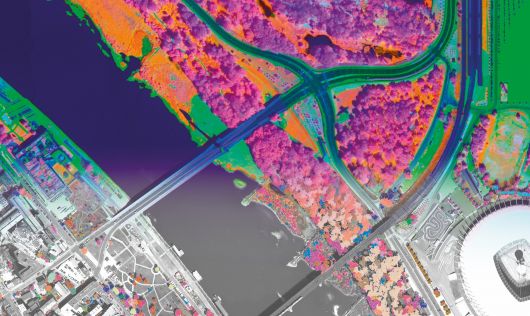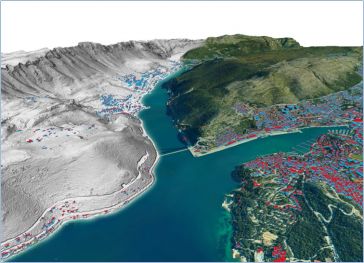


Elevating knowledge: read our in-depth features

How can artificial intelligence and deep learning lead to a robust process for 3D city modelling? And what are some of the challenges? Automated classification and object detection in Lidar and imager...

As a division of machine learning, deep learning (DL) has been achieving unparalleled success in image processing and recently demonstrated huge potential for point cloud analysis. Precise ground surf...

Integrated airborne sensing combining imagery and Lidar data presented an effective solution in this complex project to model two iconic Croatian cities with challenging relief and landscape. Nowadays...

Terrestrial laser scanning is increasingly being fused with air/spaceborne Lidar to characterize vegetation structure across a range of forest ecosystems. This article explores the potential of this a...
The US Geological Survey (USGS) and Dewberry have jointly released a new topobathymetric Lidar dataset for the Potomac River, extending from the Potomac Highlands in West Virginia to the Chesapeake Ba...
ComNav has announced the launch of its latest innovation: the LS300 3D laser scanner. This addition to the company's product lineup signifies a significant leap forward in addressing the dynamic needs...
Driving new opportunities in the mapping landscape, a significant milestone has been achieved in New Zealand. With the introduction of 3D mapping data for the Waikato and Southland regions, access to ...
A new Lidar technique could help robotic vehicles avoid hazards when landing during future space missions to Mars or the Moon. The method uses flash Lidar to record full 3D images with a single laser ...
Lidar, short for Light Detection and Ranging surveying, represents a sophisticated measuring system leveraging the power of light. Widely recognized for its versatility, Lidar is extensively applied in diverse fields such as archaeology, forestry, geography, geology, seismology, remote sensing, and contour mapping. Its influence is steadily expanding into various geomatics applications, broadening its impact on different industries.
The market for laser scanning, a key component of Lidar technology, is experiencing robust growth. This surge is propelled by the development of more efficient and cost-effective methods for processing Lidar data. These advancements unlock new possibilities across a spectrum of disciplines, including but not limited to construction and engineering, industrial facilities, topographical applications, and cultural heritage preservation.
As Lidar continues to evolve, it plays a pivotal role in reshaping the landscape of measurement and mapping technologies. Its adoption is driven by the demand for higher precision and detailed data, fostering innovation and creating opportunities in fields where accuracy and spatial understanding are paramount. Whether unraveling the hidden features of archaeological sites or optimizing construction processes, Lidar stands as a transformative force in modern geospatial applications.
This site uses cookies. By continuing to use this website, you agree to our Cookies Policy. Agree